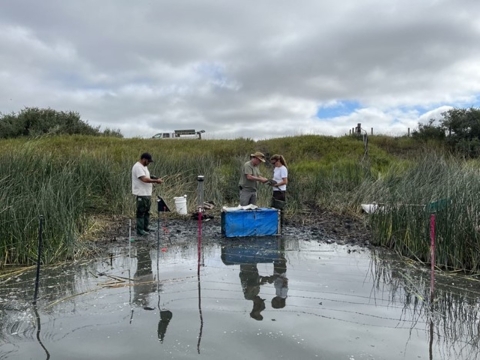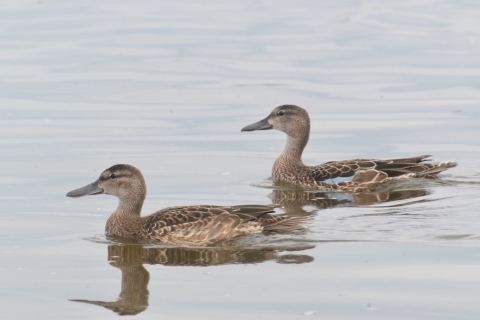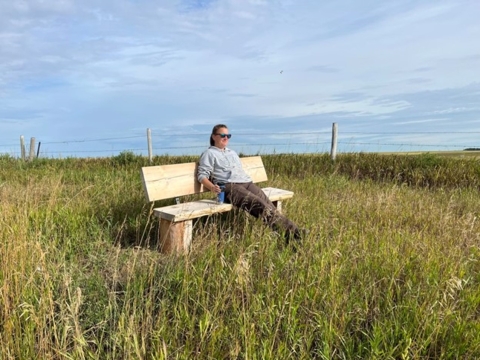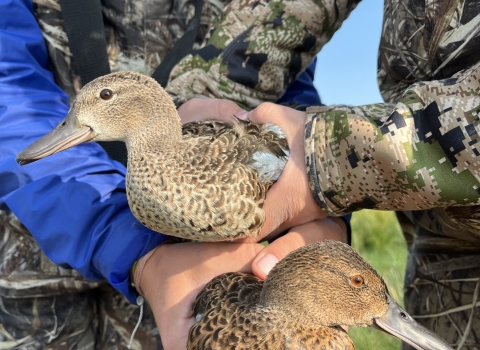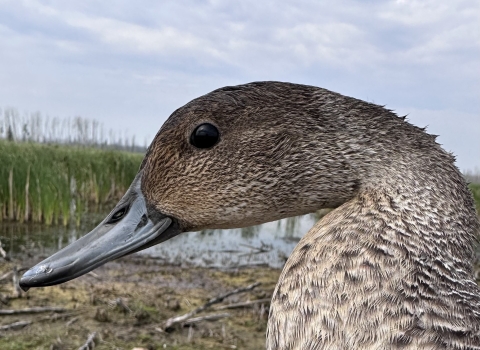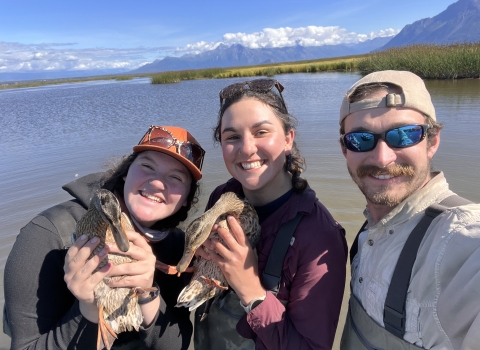I often get asked why I go back to the same place in Saskatchewan every year to band ducks as part of the U.S. Fish and Wildlife Service’s Waterfowl Banding Operations. Most people think that once you’ve seen a place, there is nothing left to see, so why go back? That couldn’t be further from the truth. In my years of coming back to this very same place, no year has been the same. The landscape, wildlife, and people change everything about the experience.
This year our crew consisted of Walt Rhodes, Crew Leader extraordinaire and Pilot Biologist from Bend, Oregon, Christopher Romero, Legal Instrument Examiner from Albuquerque, New Mexico, Jennifer Ryan, Biologist with the Wildlife and Sport Fish Restoration Program from Hadley, Massachusetts, and myself. We had a great crew! Even though Chris and Jennifer were new, they were willing to work hard, listen, learn, and they were so excited to be a part of this field work. They picked up on everything so quickly it felt like we had been working together for years instead of weeks.
This year was more pleasant compared to 2022. Certain areas that we used previously were dried up, but the areas we hadn’t used in years were full of water. We were not near the Canadian wildfires but were surrounded by a smoky haze the entire time. The haze sat on top of us like a morning fog. We hoped it would leave by mid-morning, but we were not so lucky. Regardless of the conditions, we still had high numbers of ducks and one of my personal best years. We were able to successfully band 5,027 ducks, which was definitely the highest number of ducks I have ever caught since coming up here! Most of the ducks were blue-winged teal followed closely by northern pintails. We also caught the usual suspects including mallards, green-winged teal, and redheads, although their numbers were lower than usual. We even had a few surprise guests such as gadwalls, canvasbacks, American wigeons, lesser scaup, northern shovelers and mallard x black duck hybrids.
I loved stepping out that first morning and listening to the calls of all the different wildlife. I was obviously not the only one who enjoyed those sounds as one of the farmers put a bench right on the lake edge so everyone could sit and listen. We started our day with coffee and some light banter in the truck until we pulled up to that first sight. Once we got our boots on, nothing felt better than standing in a wet marsh covered in muck. After a few days we got into a routine where everyone knew what to bring and when to head down to the site. If we were extra lucky, someone even brought danishes with us (they were delicious).
I always look forward to this detail. I get excited to see how the landscape changed from last year, get to know the new people I will work with, and face new challenges. I love going back and seeing some of the old acquaintances and catching up with these friends. The same can be said for the new acquaintances that I meet every year and the excitement of what I might learn from them. All these relationships are so beneficial to me and help me grow into a stronger and better person. One would think that by now I am an old pro at this, but as my crew leader liked to say, “The jury is still out deliberating.” Until then, I continue to learn and absorb as much information as I can.
Disclaimer: All banding, marking, and sampling is being conducted under a federally authorized Bird Banding Permit issued by the U.S. Geological Survey’s Bird Banding Lab and the Bird Banding Office in Canada.
